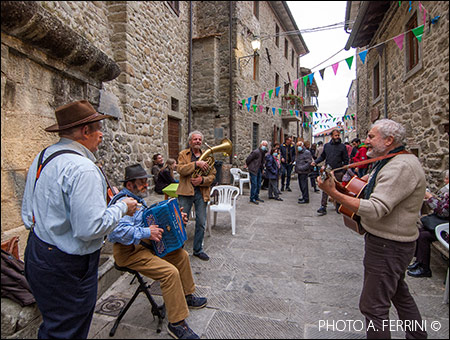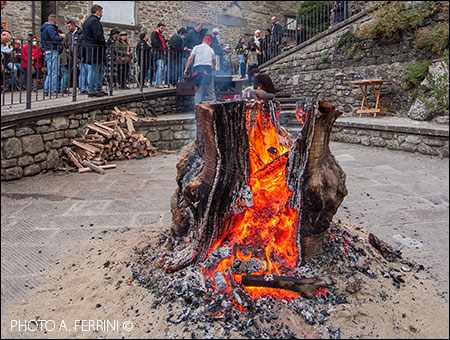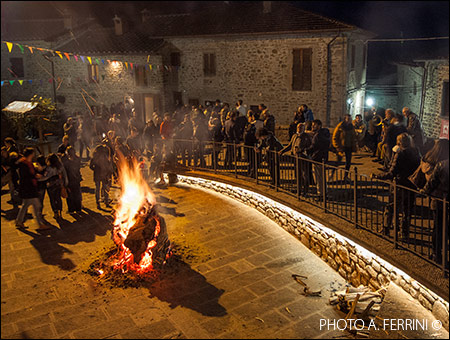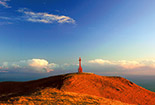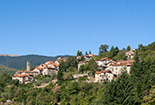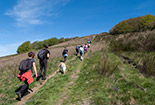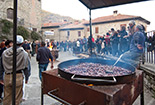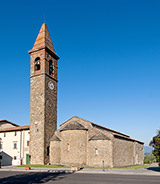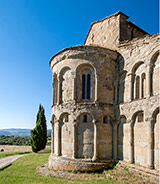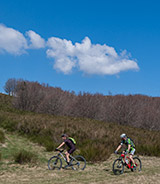Raggiolo
in Casentino, a Tuscan valley with which you can get familiar in every detail through this site
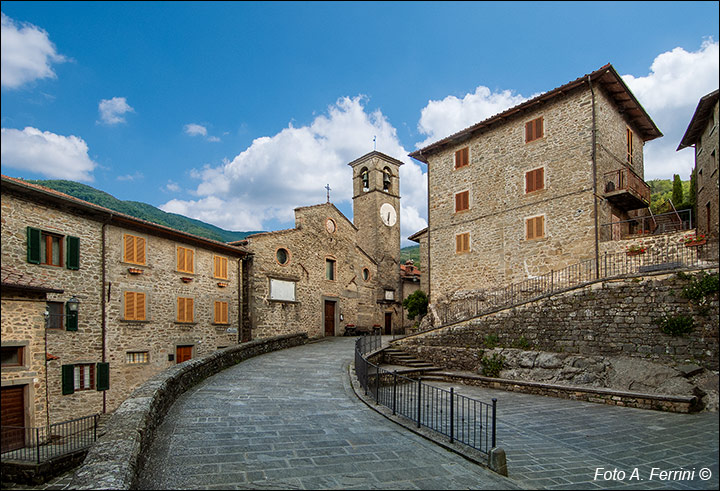
Texts and photos by Alessandro Ferrini ©
60 accurately described images of Raggiolo. Click to enlarge
On the Pratomagno there is one of the most beautiful towns of the whole Italy: Raggiolo
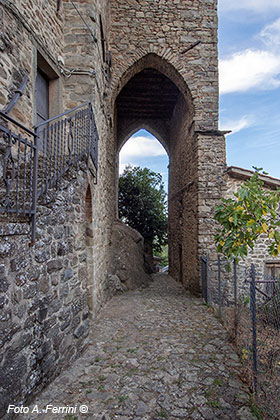 Raggiolo, which is an hamlet situated on the slopes of the Pratomagno, has very ancient origins and an intricate story. It is twelve kilometers away from Bibbiena. The road that takes you there is flanked by agricultural lands and is quite flat until reaching the village of Ortignano. Then, it starts going up significantly and it channels into the torrent Teggina valley, where the fields are replaced by woods, mostly of oak-trees and chestnut-trees. At some point, you will suddenly notice the town of Raggiolo out of nowhere, perched on the slopes of a mount.
Raggiolo, which is an hamlet situated on the slopes of the Pratomagno, has very ancient origins and an intricate story. It is twelve kilometers away from Bibbiena. The road that takes you there is flanked by agricultural lands and is quite flat until reaching the village of Ortignano. Then, it starts going up significantly and it channels into the torrent Teggina valley, where the fields are replaced by woods, mostly of oak-trees and chestnut-trees. At some point, you will suddenly notice the town of Raggiolo out of nowhere, perched on the slopes of a mount.
The origins of this place date back to the VII century when the Lombards established the foundations of one of their settlements there. In 967 Emperor Ottone I of Germany, with the aim of organising an Italian territory that had become very anarchical in that period, granted Goffredo di Ildebrando the feud of this place, who built a castle there. But the most famous, and at the same time most intricate, story of Raggiolo begins in the XIII century when the castle of Raggiolo became a Counts Guidi's property. Count Guido Novello had his own palace built inside it (the remains are recognisable in the facade of nowadays church) and he lived there during the first two decades of the XIV century turning Raggiolo into a very well fortified and armed castle. After Guido Novello, Raggiolo belonged for some years to the Umbertini of Chitignano, but in 1325 Guido Tarlati, bishop of Arezzo, entrusted it to his brother Pier Saccone and his son Marco.
The Florentine victory in the Battle of Campaldino in 1289 had consequences, as a result, Florence's political-military strenght in the Casentino grew stronger and stronger. Therefore, in the middle of the XIV century the Castle of Raggiolo was subjected to the Florentine Republic and, together with the Castles of Uzzano, Ortignano, Civitella and Giogalto, was made part of what later was called the Florentine Valley. This started a very troubled period for Raggiolo. On one hand, they were gladly accepting Florence's protection, on the other hand they were claiming their autonomy. This situation was giving rise to conflicts not only with the Tuscan city, but also among the inhabitants of these places, who were divided between those in favour and those against the submission to Florence. This situation was ended in 1440 by Niccolò Piccinino, a captain of fortune in service for Milan, who destroied and set fire to the castle killing the majority of its inhabitants in order to damage the Florentines. 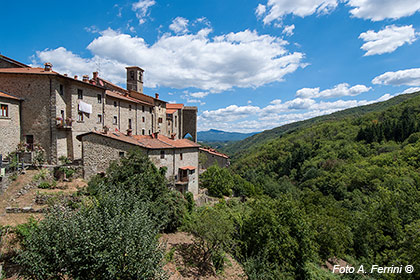
The castle was never re-built; however, the town was slowly reborn during the XVI and XVII centuries and became a very large village You can see this if you visit its alleys that climb up on the mount on which Raggiolo lies. The homes are often foundation-less because they are laied directly on the rock. There is very little proof of the ancient castle. Some can be noticed on the facade of the church which was built as a replacement of the palace of Count Guido Novello and on a wall where the beautiful fountain of the town is located.
From its creation until a few years after the end of the Second World War the inhabitants of this village had been getting the resources they needed for living from the environment that surrounded them. They were: wood, chestnuts (which were also used to make flour), products coming from shepherding, and other variations of animal farming.
Raggiolo looks extremily orderly, its hamlets and alleys are perfectly cobbled, its houses are completly renovated. During the good season, flowers of several colors decorate balconies and windows. 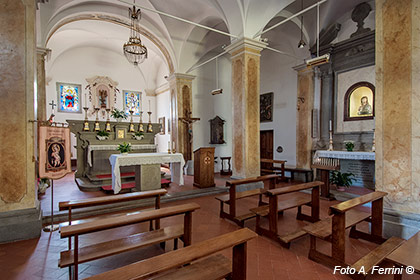 From several points in the town it is possible to admire the beautiful landscape of the Casentinese valley-floor, where you can see mount Verna on the horizon.
From several points in the town it is possible to admire the beautiful landscape of the Casentinese valley-floor, where you can see mount Verna on the horizon.
The church of Raggiolo, consecrated to St. Michael the Archangel, reveals in its facade the Medieval past of this place. The inside shows an interesting three-aisled architecture. Fine works of art, which we can be seen in detail in the pictures of this web section, are preserved inside of it.
Raggiolo can be the starting point of nice walks: some are quite challanging and take you up to the Pratomagno ridge, others are much lighter and remain in the proximity of the town. The interesting path that begins from the Usciolino Bridge on the river Teggina leads you to the near hamlet of Quota in about one hour walk.
Raggiolo is fervid of fascinating cultural, folkloristic and territory promoting activities that are held throughout the year. Particularly important is the "Festa di Castagnatura", which is a festival dedicated to chestnuts that usually takes place during the last weekend of October.
In order to be aware of the initiatives that take place in this town you should visit the website www.raggiolo.it
This place situated on the slopes of the Pratomagno offers countless reasons for justifying a visit or some days on vacation, last but not least the purity and tranquillity of the surrounding environment. This is the reason why it is part of the "Most Beautiful Towns of Italy".
